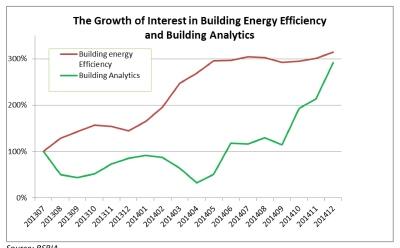The starting point for energy-efficient buildings

Improving a building’s energy performance requires and understanding of how the various building systems are performing. Henry Lawson and Reginald Brown of BSRIA discuss how to get that information.
Despite recent falls in oil prices, the cost, security and environmental impact of energy used in the UK’s buildings remains a major concern. With serious geo-political conflicts in both the Middle East and in and around Russia, two of the world’s major energy producing regions, and with growing recognition of climate change these concerns are unlikely to go away.
The building manager or consultant looking to improve the energy efficiency of a building has a limited range of weapons at their disposal. Apart from making the structure of the building more energy efficient, often difficult and expensive where existing buildings are concerned, or installing HVAC systems that are more efficient in their use of energy, which can require substantial investment, the main option lies in monitoring and managing a building’s use of energy more efficiently.
Hence the importance of building and energy management systems (BEMS) — computer software-based systems that help to manage, control and monitor building technical services (HVAC, lighting etc.) and the energy consumption of devices related to the building’s use.
BSRIA research at the end of 2014 showed that BEMS market was growing at about 10% annually in Europe and is expected to reach some £1.2 billion in Europe this year. The UK share of this market is likely to be close to £200 million. This is in part a reflection of the fact that UK non-residential buildings have a higher energy consumption per square metre than their equivalents in France and Germany.
BSRIA’s findings are also echoed by web coverage of major issues concerning energy and smart technology. This includes both major news stories and company announcements. Coverage of building energy efficiency trebled between the middle of 2013 and the end of 2014.
But how is this growth in interest being focused? To improve a building’s energy performance, you need to understand how the various building systems are performing. Ideally, too, you need to identify patterns and predict and pre-empt problems, as where, for example, a piece of equipment is using an abnormally high amount of energy. Accordingly, BEMS systems are offering increasingly advanced and sophisticated analytical capabilities, going far beyond simple charting and reporting. And when we look at web coverage of building analytics, we see a massive surge of coverage in the second half of 2014 alone (see diagram).
Of course, this coverage reflects the attempts of companies offering analytics to promote their solutions as well as the interest of the media and the market. But the genuine growth in the BEMS market — with building analytics at the core — suggests that this is a lot more than just ‘hype’. However, with such a range of choices of BEMS solutions and associated analytics available, clients need to make sure that any BEMS solution that they select can collect the information that is needed and present clear information that identifies what action needs to be taken.
To help deliver building energy efficiency, today’s BEMSs facilitate different levels of interaction with the building systems.
• Automatic control
• Alarms
• Automatic optimisation
• Demand response

• Monitoring and targeting
• Equipment performance analysis
• Maintenance actions
• Estate monitoring and targeting
Building managers need to be able to respond in a timely and effective way to problems and anomalies that are identified. At the most basic level this means that those operating and maintaining the building on a day-to-day basis, whether they are in-house staff or outsourced facilities managers, understand the information being generated, how to prioritise it and, finally, what concrete steps they need to take.
For many facilities managers the perfect BEMS would collect, analyse, act on and distribute all necessary information, and save energy — with the minimum of human intervention. The problem has always been that even with the best available hardware and software, the BEMS is only as good as the chap who installed and programmed it on day one. That situation may be beginning to change.
There is certainly a shortage of good BEMS engineers and controls technicians but the dominance of BACnet, providing plug and play hardware, together with open-source configuration and analysis tools means that engineers’ and technicians’ time can be much more productive and added-value functions are much easier to implement.
No longer do facilities managers need to fear being stuck with a rigidly defined BEMS from a single supplier, but the ultimate specification is limited only by their imagination.
A simple BEMS starting solution for one building can be progressively expanded in terms of scope and versatility across an entire organisation. If you then need to integrate renewables, smart metering, carbon management, demand response, reactive maintenance etc., that will be no problem.
If you can think of an energy-management task or energy-saving opportunity associated with your building or estate operations, the new generation of BEMSs can probably do it, probably more easily than you might think and without the risk of drowning in data. Add components from the wider internet of things and the possibilities are limitless.
Henry Lawson is a consultant with BSRIA’s worldwide market intelligence group and Reginald Brown is senior consultant with the sustainable-construction group.








